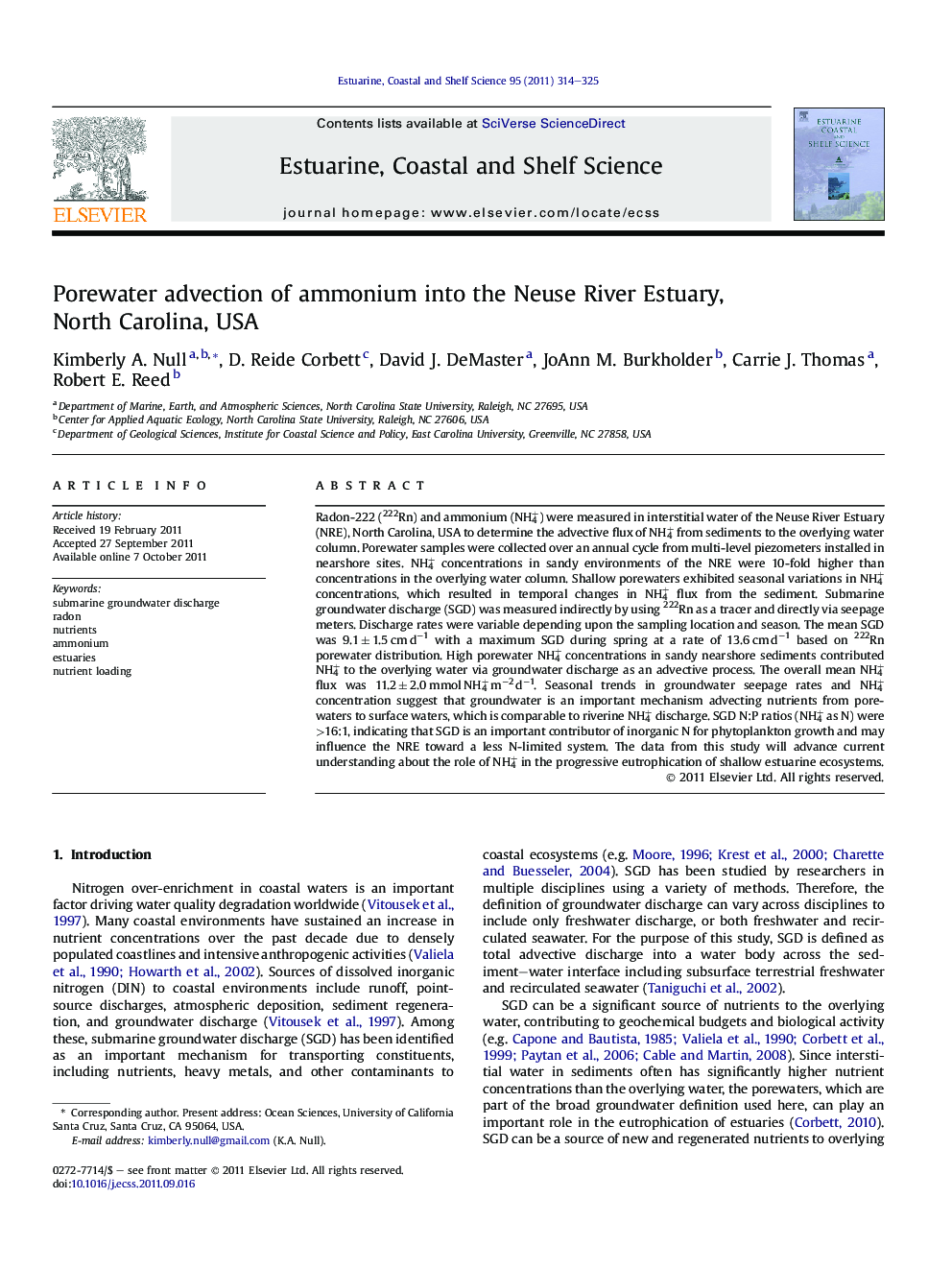| Article ID | Journal | Published Year | Pages | File Type |
|---|---|---|---|---|
| 4540394 | Estuarine, Coastal and Shelf Science | 2011 | 12 Pages |
Radon-222 (222Rn) and ammonium (NH4+) were measured in interstitial water of the Neuse River Estuary (NRE), North Carolina, USA to determine the advective flux of NH4+ from sediments to the overlying water column. Porewater samples were collected over an annual cycle from multi-level piezometers installed in nearshore sites. NH4+ concentrations in sandy environments of the NRE were 10-fold higher than concentrations in the overlying water column. Shallow porewaters exhibited seasonal variations in NH4+ concentrations, which resulted in temporal changes in NH4+ flux from the sediment. Submarine groundwater discharge (SGD) was measured indirectly by using 222Rn as a tracer and directly via seepage meters. Discharge rates were variable depending upon the sampling location and season. The mean SGD was 9.1 ± 1.5 cm d−1 with a maximum SGD during spring at a rate of 13.6 cm d−1 based on 222Rn porewater distribution. High porewater NH4+ concentrations in sandy nearshore sediments contributed NH4+ to the overlying water via groundwater discharge as an advective process. The overall mean NH4+ flux was 11.2 ± 2.0 mmol NH4+ m−2 d−1. Seasonal trends in groundwater seepage rates and NH4+ concentration suggest that groundwater is an important mechanism advecting nutrients from porewaters to surface waters, which is comparable to riverine NH4+ discharge. SGD N:P ratios (NH4+ as N) were >16:1, indicating that SGD is an important contributor of inorganic N for phytoplankton growth and may influence the NRE toward a less N-limited system. The data from this study will advance current understanding about the role of NH4+ in the progressive eutrophication of shallow estuarine ecosystems.
